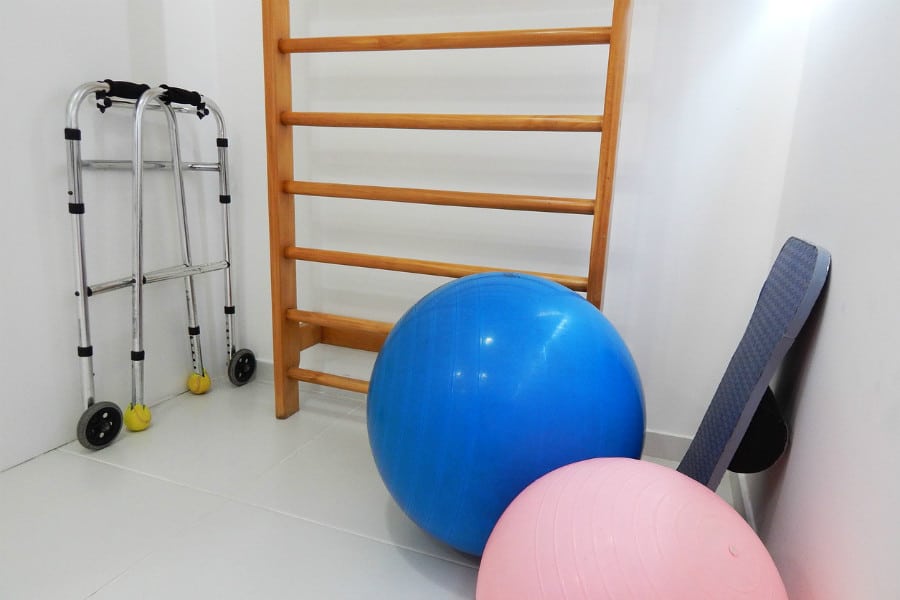Many people are actually suffering from sacroiliac (SI) joint pain. This article explores the approaches to pain relief for the SI joint.
What Is the Sacroiliac Joint?
The sacroiliac joint connects the sacrum—the triangular bone at the bottom of the spine—with the pelvis-iliac bone that is part of the hip joint. The human body has two sacroiliac joints, located each side of the lower spine.
There is not a lot of motion in the joint; it is a strong joint that produces the interlocking of the two bones.
As humans age, the characteristics of our sacroiliac joint changes. In early life, its surfaces are flat and planar, but as we start moving and walking, its surfaces develop distinct angular orientations and lose their planar or flat topography.
The joint develops an elevated ridge along the Ilial surface and a depression along the sacral surface. This ridge and corresponding depression, along with strong ligaments, increase the joint’s stability and makes dislocations very rare.
Get Back Your Normal Life Again
As pain specialists, we can guarantee that we are more than qualified in alleviating your pain and treating your condition.
This joint actually functions as transmitter of all the forces of the upper body to the legs and joints. Like many lower extremity joints, it also functions as a shock absorbing structure of the body.
Sacroiliac Joint Dysfunction
A common problem of this joint is the sacroiliac joint dysfunction.
This generally refers to the pain in the sacroiliac joint region. This is caused by abnormal motion in the sacroiliac joint; either by too much movement (hypermobility/instability) or too little movement (hypo mobility/fixation).
When caused by hypermobility, the pain is typically felt in the lower back and/or hip and may radiate into the groin area. When due to hypo mobility, the pain is typically felt on one side of the lower back or buttocks, and can radiate down the leg.
The pain usually remains above the knee, but at times, can extend to the ankle or foot. Such problem is more commonly found in middle-aged women.
Another problem is the inflammation of one or both sacroiliac joints. This is called sacroiliitis. With this inflammation, the individual can experience pain in the low back, buttocks or thigh, depending on the amount of inflammation.
So, How Do Patients Get Pain Relief for SI Joint?
Specialists indicate that the treatment of sacroiliac joint pain is most commonly non-surgical. The approach is to address the root cause of the problem.
The focus is on reducing inflammation and pain and restoring the normal motion of the joint. These are the common non-surgical remedies suggested by specialists:
- Physical therapy and exercise.
- Use of pain medications such as acetaminophen or muscle relaxants and anti-inflammatory drugs such as ibuprofen and naproxen.
- Use of pelvic belt to provide stability.
- Osteopathic and chiropractic manual manipulation of the sacroiliac joint
- Injections to the sacroiliac joint. The injections introduce pain relieving medication and/or anti-inflammatory medication directly into the joint and are most done using fluoroscopy. Length and amount of pain relief is variable.
Physical therapy and exercise can ease stress on the joints. The two types of treatments are the passive and active treatments.
In passive treatment, the physical therapist does most of the work. With active treatment, you do the work. Exercises which can do a lot of help include stretching, strengthening and aerobics.
You do not need to do intense exercise. Instead, the key is consistency.
In the use of pain medications, the best to initially take is Tylenol, within its prescribed regimen. If this is not effective, an anti-inflammatory drug may be introduced.
May people start off with over-the-counter ibuprofen. Be sure, however, that you do not have ulcer or gastrointestinal problems as this may worsen your condition. A stronger anti-inflammatory drug may be prescribed by your primary care physician.
The use of pelvic or sacral belts help stabilize the sacroiliac joint. The belts are approximately six to eight inches wide, and go around the pelvis, not the low back. It is very important to wear these belts correctly.
Usually, companies that produce back braces also produce sacroiliac belts. They will also show you how to use the belt.
A sacroiliac belt is something where you are measured, and it comes out of a box. You are fitted with it, trained to use it, and then you go on your way.
If the belt works, you can wear it indefinitely without any downside. The one caution that is emphasized by experts is that this may develop bursitis, a painful condition that affects fluid filled sacs.
This is caused by the belt rubbing the lateral aspect of the hip. If this happens, the use of the belt should be discontinued.
Get Relief From Your SI Joint Pain at Arizona Pain and Spine
If you’re looking for pain relief for SI joint, make an appointment to see the specialists at Arizona Spine and Pain Institute today.

